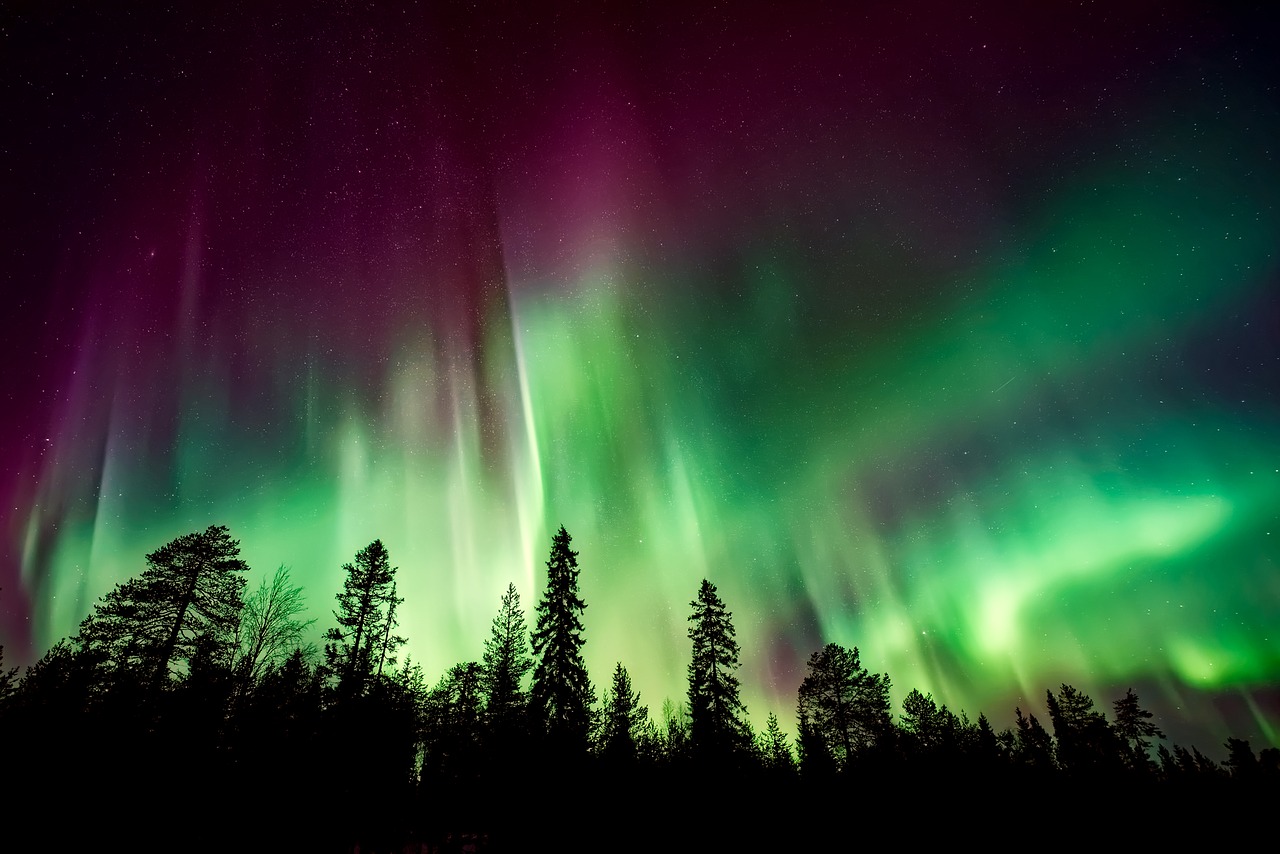Dance of Lights
The Dance of Lights has always been very meaningful and central part of the Jusvidurna culture. In some form, the ritual of it has existed as long as the Jusvidurna have lived in Jusvik province of Uskevig. The ritual itself has gone through changes, as the Jusvidurna way of life changed, but in the heart of it, the meaning has always remained the same. Honor to the dead, and respectful and peaceful parting.
Respect for the dead
The Dance of Lights, when it first came to be, was a way to honor the dead. There was no music, and everyone was required to be respectful and silent. It was, and still is, a holy and revered ritual for the Jusvidurna. Those who had had a relative or a close one die recently, were expected to dance when the lights lit up, and they would be expected to dance until the lights vanished from the skies. To show their piety and love, their dance needed to show their connection, their loss, and their mourning for the dead. If one's dance wasn't as good as expected, it was thought that perhaps one wasn't as sad at the passing as one should have been.History of the Dance of Lights
The Jusvidurna, who lived in the northeastern region, in the Jusvik procince of Uskevig, believed that the lights that they saw dancing in the skies were the pathways that the dead used to travel to the dwelling of the dead, that lied across the northern Icen sea. The Jusvidurna showed their respect to the dead by performing the Dance of Lights, hoping that by giving the dead their proper farewell from the land of the living, they would have easier journey to the land of the dead. The Jusvidurna also believed that by giving them a sendoff that the dead could see from their pathways on the sky, they would know that the living were mourning them, that the dead would understand that there was no place for them in the living world and so they wouldn't turn from the path and wander back into the land of the living. The Jusvidurna would dance every night when they saw the lights, imitating the flow and shape of the lights above them. Most devout among them, believing it was their duty to send off the dead, would continue dancing until the lights vanished. Those who had relatives that had died of late, were expected to be very devout of their dancing, but otherwise people would dance for a while, long enough to show their respect, but not necessarily for the whole duration of the dancing lights. There were no set steps, no set pattern to the dance, as the Jusvidurna believed that everyone should form their own, personal send off. The dance, and the meaning of it was thought to be private, and mimicking anyone else was frowned upon, as that was seen as insincere. Many dedicated hours upon hours to perfect their dance, to show their respect and to honor those who had passed. Later, when the Jusvidurna become settlers, living in villages, no longer in the mercy of the wilderness around them, they became less devout, as their lives no longer depended on their pleasing of the spirits. Spirits were, of course, still revered, but the Jusvidurna lives no longer revolved around the spiritual. Some rituals vanished completely, others changed, became less time consuming, more adapted to their daily lives. And that's what happened to the Dance of Lights as well. No longer did the majority of the Jusvidurna want to dance every night under the stars on account of lights showing up. And neither could they, as they had new responsibilities that took up a lot of their time.Day of the Dance of lights
The Jusvidurna slowly, unconsciously, altered the Dance of Lights rituals. They went from dancing every night to dancing on a single day a year, to honoring all the people that had died during that single year with one dance. They didn't consciously decide to shift the dancing into a single day, it happened gradually, relatively unnoticed by the people. But as the Ushvadurna spread their own celebration, the Jusvidurna, unconsciously, combined the new rituals to their own traditions. One of these rituals that the Ushvadurna spread to the other provinces, was one their most important festivals of the year, the Sunbring festival that they celebrated on the winter solstice. The Ushvadurna believed, that during autumn the sun had fallen asleep, and that by holding the Sunbring festival, they could wake up the sun, so the spring could arrive. When the Sunbring festival became popular among the Jusvidurna, they took their own familiar rituals and added them to it. As Sunbring festival had much dancing, it only felt natural to the Jusvidurna to use the occasion to dance the Dance of Lights. And so, the current form of the Dance of Lights was born. When the Jusvidurna started to dance only once per year, they started to make the event more grandiose than the simple dances that they had performed earlier. Before, they had danced so often and without no time to prepare, they hadn’t been able to prepare for it, as the dancing lights were impossible to predict or plan for. So now, with a set date, they could prepare beforehand, make sure everything was done as well as it could, that everything was organized. That was their new way of showing their respect to the dead, and to the ritual. So they began to prepare beforehand for the ritual, they used time to craft beautiful, intricate costumes, they embroidered them with colorful threads and motifs of the dancing lights. They would make sure every cloth was a masterpiece of needlework. They still celebrated outdoors, under the skies so that the dead who were passing over could see the dance, see how they were honored and remembered. The Jusvidurna constructed wooden structures, raised them up in the ritual plazas around the province, and hung cloths on them that were embroidered to resemble the dancing lights. They would drape them over the constructions carefully so that the wind could wave the cloth enough to create the illusion that they themselves were in the night sky. They lit colorful candles, placing them all over the festival area, imitating the stars, and giving them the gentle lightning that they needed. Now, compared to the past, their dances were much more grandiose, much more exquisite. Before their dances had been improvised, now everything was arranged to the finest detail.Opinions
Some feel like the new version of the ritual is too insincere, that by managing every detail of the performance the original meaning for the dance has disappeared. Some however, feel that all rituals must move with the times, and that the current form of the ritual is just the way people want to show their respect. While both sides argue on the way the ritual should be performed, most of the people fall somewhere in the middle of the argument, feeling that perhaps not everything about the rituals should be changed but that changing some of the things is no sign of disrespect.
Related Ethnicities
Remove these ads. Join the Worldbuilders Guild











Hey there, thanks for entering the Festival challenge, be sure to share your article on Reddit, Facebook, Twitter and any other social media sites! Remember more hearts (at the bottom of the page) increases your chance of winning! - GorgeFodder (World Anvil Community Team)